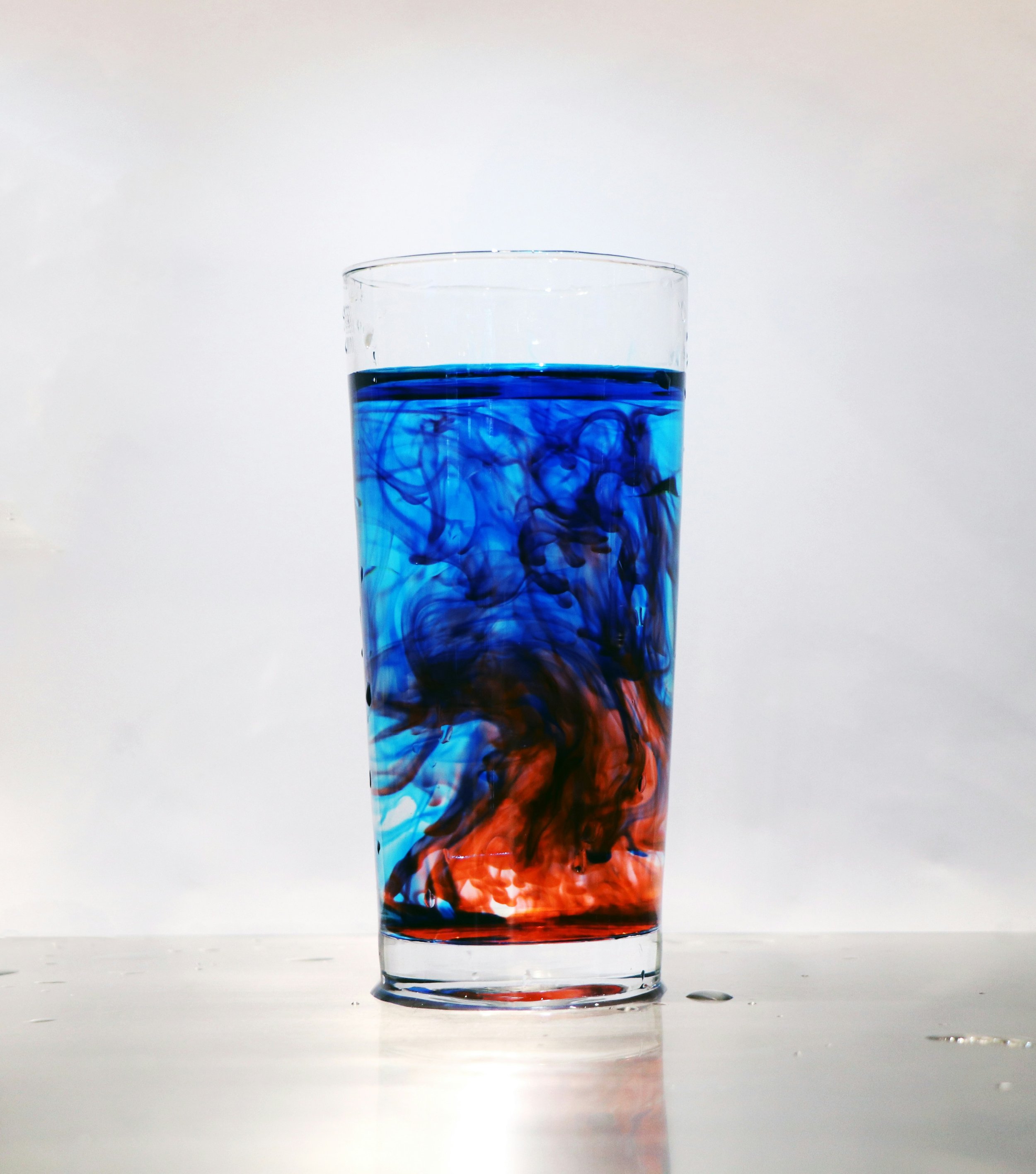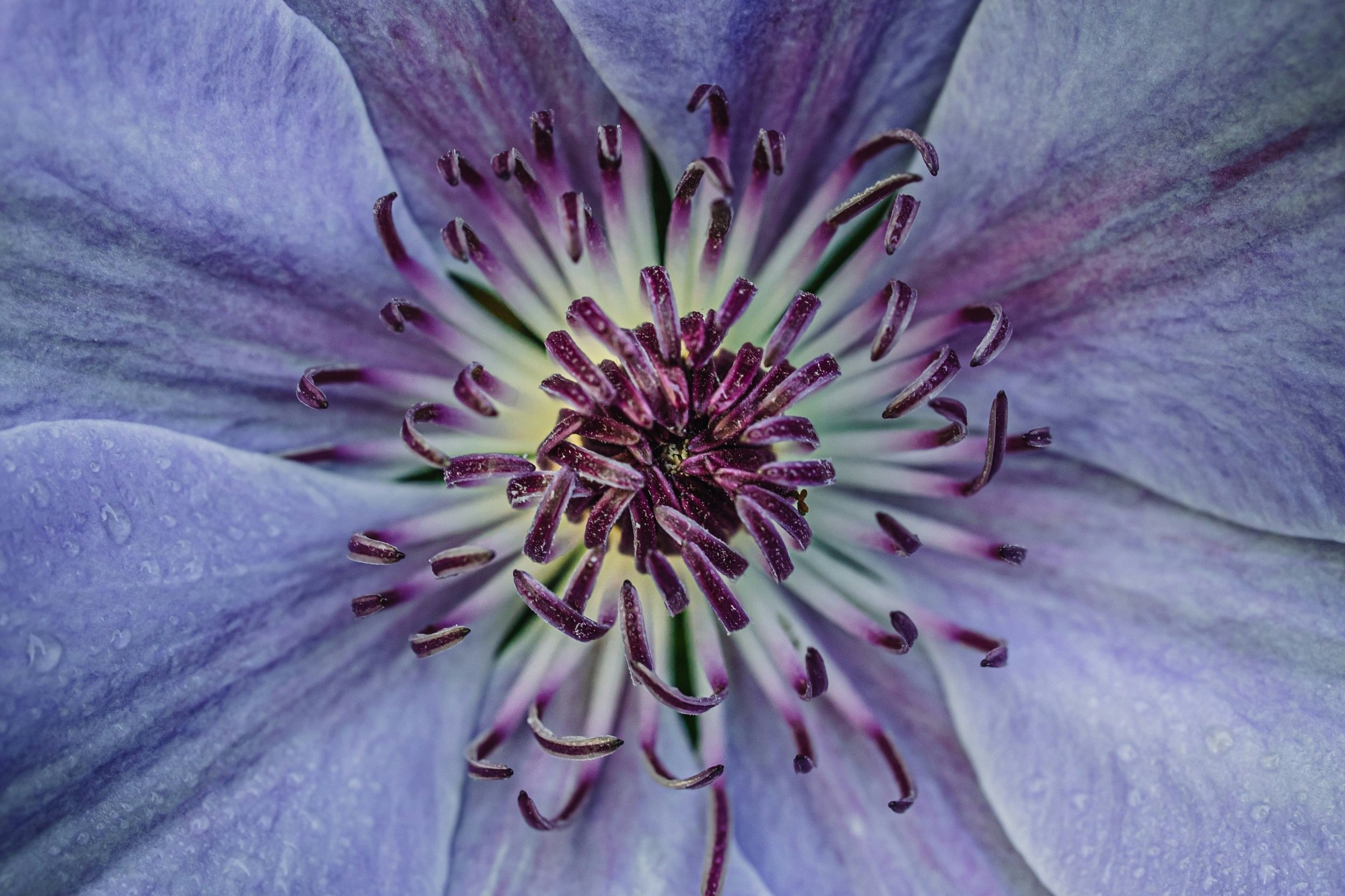Dyeing Clothing for Seasonal Color Palettes
If you’re freshly analyzed and armed with your season’s color palette, one of your first instincts may be to dye your existing wardrobe. While dyeing can be an inexpensive and rewarding way to transform your clothing, I will lay out some of the main stumbling blocks for those new to the craft.
Not all fabrics require the same type of dye. And some types of dyeing processes are more labor-intensive. While certain types of dye can process just fine in warm water (as in, from a tap and in a bucket) others require heating over a stove, to maintain a high temperature throughout the dye process.
As a lazy, somewhat sloppy crafter, the only type of home-dyeing project I will undertake is tub dyeing. This means that I only dye plant fiber items, as animal fiber items (wool, cashmere) require “cooking” dye baths over a stove. So this post will describe the process I follow, using fiber reactive dyes on plant fiber clothing only!
Will my fabric take dye?
As long as your fabric is mostly comprised of plant fibers, with only 5-10% synthetic (polyester, elastane, spandex, etc) you are likely good to go. I have used fiber reactive dye with great success on modal (which is semi-synthetic), viscose, linen, cotton, rayon, and bamboo, as well as mixed fiber provided the synthetic content is less than 10% or so of the total fabric composition.
Am I Willing to Lose This Item?
I only recommend dyeing garments if the following can be said…
I like the fit and fabric, but I just don’t like the color
I can’t return this item, as I have owned it for too long
I didn’t buy this item specifically for the purposes of dyeing it
I have had most of my dyeing projects turn out exactly right, with a few fails. But I keep my expectations moderated, and I don’t spend a lot of money upfront on items which I may ruin in the process of dyeing!
If you are dreaming of an exact color outcome, you may be disappointed. It is better to wait and buy the item ready-made if you have an extremely precise color vision in mind.
Is my Desired Color Very Different from the Original?
Even 100% plant fiber clothing is stitched together with polyester thread. The polyester thread will only change color if you use a synthetic-specific dye. But your clothing fabric will only change color if you use a plant-specific dye. Therefore, you are either required to do two separate dye baths with two separate types of processes (I have never done this) or you have to be OK with a thread that slightly contrasts with the finished garment.
Original: taupe stitching matches taupe fabric exactly
After dyeing: taupe thread is slightly lighter than the burgundy brown final fabric
This just means that you want to be reasonable in terms of how deep and different you want your final product to be. Do not start with a white shirt and expect to turn it navy blue. Instead, look at a dusty medium periwinkle and see if you can turn it navy.
What Is my Goal?
If you are dyeing an already-colored garment (which is what I recommend, as dyeing white garments will leave stark white seams) then you need to consider that the dye will interact with the existing color, and produce something potentially unexpected.
Dyeing is a way to give your existing garments a second life, not to completely transform them in every way. If you have a pink tee shirt that’s all wrong in terms of color, you aren’t going to always be able to turn it into the blue shirt of your dreams… but you can likely make it into a better pink for you!
I have outlined some tips by season, as well as a non-exhaustive list of color recommendations for each season:
For True and Dark Autumns
You have some of the easiest dye jobs in your future. If you own clothing that is too vibrant or light for your palette, you can always bring them into the Autumnal realm by adding a touch of warm sienna brown or orange. You don’t even necessarily need to buy lots of dye colors, as your main goal is to dirty up and ground your existing clothing. This can be accomplished using just one shade of warm brown!
Dharma Trading Shade Recommendations: Bronze, Khaki, Brazilnut, Golden Brown, Terracotta, Rust Brown, Amber Waves, Palomino Gold, Herbaceous, Wasabi, Lime Squeeze, Chartreuse, Avocado, Moss Green, Teal Blue, Kingfisher Blue, Indigo Blue, Golden Yellow, Marigold, Deep Yellow, Pagoda Red, Tangerine, Soft Orange, Orange Crush
For Bright Winter, Bright Spring, True Winter, and True Spring
When deciding whether to dye a garment, ask yourself if the existing fabric is very muted in appearance?
If so, that muted appearance may carry over to your final product unless you intend to make your item extremely dark, or nearly black. However, if you have a fairly light, muted garment, you can make it into a midtone bright quite easily using any of the most vibrant dyes pictured on Dharma’s site.
Dharma Trading Shade Recommendations: Lemon Yellow, Bright Yellow, Daffodil, Clear Yellow, Deep Orange, Watermelon, Coral Pink, Bubble Gum, Hot Hibiscus, Dragon Fruit, Light Red, Atomic Fireball, Scarlet, Chinese Red, Fire Red, Fuchsia Red, Amethyst, Magenta Galactica, Red Violet, Blue Violet, Ultra Violet, Nightshade, Houdini Blue, Electric Blue, Strong Navy, Sapphire Blue, Royal Blue, Turquoise, Bahama Blue, Glacier Blue, Cayman Isle Green, Jade Green, Mermaid’s Dream, Better Blue Green, New Emerald Green, Kelly Green, Bright Green, Raven Black, Mist Gray, Blue Gray, Silver Lining
For Dark Winter
It is very easy to transform vibrant True Winter colors into Dark Winter colors by taking just a bit more of the same color family dye, and adding a small amount of black or even cool brown to make the color richer and more earthy. New Black from Dharma Trading is your friend. Use it at 1/4 strength alongside other deep, vibrant colors to ensure your dye projects end up dark and vivid. Do not attempt to turn very light items into very deep Dark Winter shades—instead look for inspiration from the middle-bright areas of your palette.
Dharma Trading Shade Recommendations: New Black, Truffle Brown, Silver Lining, Mist Gray, Ecru, Truffle Brown, New Emerald Green, Dark Green, Better Blue Green, Forest Green, Indigo Blue, Sapphire Blue, Midnight Blue, Blue Abyss, Nebula Navy, Imperial Purple, Eggplant, Black Cherry, Raspberry, Pomegranate, Oxblood Red, Burgundy, Red Wine, Bright Yellow. Charcoal Gray, Thundercloud, Gun Metal Gray, Timber Wolf
For Light Spring and Light Summer
You are the two seasons who may be able to transform white items into your perfect pastel-bright shades. Unfortunately, you won’t be able to transform your too-deep or too-earthy shades, as dyeing can only make things darker.
Dharma Trading Shade Recommendations: Ivory, Bright Yellow, Orange Sorbet, Coral Pink, Peach, Bubble Gum, Baby Pink, Hot Pink, Atomic Fireball, Sweet Pea, Peony, Lilac, Hydrangea, Sky Blue, Ice Blue, Periwinkle, Baby Blue, Bluebird, Alpine Blue, Peacock Blue, Glacier Blue, Robin’s Egg Blue, Turquoise, Bahama Blue, Parakeet, Cayman Isle Green, Jade Green, Aqua Marine, Mermaid’s Dream, Seafoam, Celadon, Sea Glass, Ecru, Shiitake Mushroom, Mist Gray, Silver Lining, Pewter, Brushed Steel, Charcoal Gray
True Summer
You have a fairly easy time transforming light and medium shades, as you only need to add a bit of slate blue, cool gray, or cool purple to give a foggy, cool appearance to items. Beware any dyes with a hint of warmth, which can be recognized by dipping a paper towel into a dye bath before submerging fabric. You do not want to add yellow or orange/peach tones to your projects.
Dharma Trading Shade Recommendations: Citrus Yellow, Orchid, Plum Blossom, Sweet Pea, Peony, Hydrangea, Lilac, Lavender, Wisteria, Amethyst, Plum, Grape, Nightshade, Power Berry, Ice Blue, Periwinkle, Sky Blue, Brilliant Blue, Bluebird, Houdini Blue, Navy Blue, Deep Space, Bbay Blue, Alpine Blue, Peacock Blue, Cerulean Blue, Blueberry, Wedgewood Blue, Bahama Blue, Kingfisher Blue, Grecian Sea, Teal Blue, Aqua Marine, Mermaid’s Dream, Sea Glass, Forest Green, Truffle Brown, Shiitake Mushroom, Mist Gray, Blue Gray, Silver Lining, Timbe Wolf, Brushed Steel, Gun Metal Gray, Thundercloud
Soft Summer and Soft Autumn
You both have a little bit of warmth, but not so much as True Autumn, so beware using orange dye and stick to cooler browns like Truffle Brown, Shiitake Mushroom, or Ecru. Also consider using grays + browns to transform your clothing, and you are the seasons that can most easily mix warm and cool dyes together to produce those “middle of the road” colors that populate your palettes. If using very vibrant dyes (which I have not recommended below, but you can experiment with!) use a tiny amount, like 1/8 or 1/10 of the recommended amount, to get a sheer veil of color.
Dharma Trading Shade Recommendations: Ivory, Citrus Yellow, Peach, Powder Pink, Oxblood Red, Dances with Raisins, Plum Blossom, Periwinkle, Sky Blue, Bluebird, Brilliant Blue, Navy Blue, Deep Space, Blue Abyss, Wedgewood Blue, Kingfisher Blue, Aqua Marine, Sea Glass, Sage Green, Muir Green, Wasabi, Herbaceous, Truffle Brown, Dutch Chocolate, Rust Brown, Terracotta, Chamois, Camel, Ecru, Shiitake Mushroom, Mist Gray, Blue Gray, Silver Lining, Timbe Wolf, Brushed Steel, Gun Metal Gray, Thundercloud, Pewter
Supplies needed:
Procion Dyes - these are suitable for use with cotton, bamboo, hemp, linen, silk, rayon, viscose, etc.
Dyer’s Salt - You can use any non-iodized salt, but this dissolves super fast in warm or hot water, so I prefer it over table salt.
Soda Ash - This is used to raise the pH of your dye bath, partway through the process, which enables the dye to bond with your clothing’s fibers. Without it, your dye will wash out more easily and may stain other clothing or just not last as long. This material can give you chemical burns, so follow manufacturer instructions closely, and wear gloves and eye protection.
Dyer’s Detergent - Not the same as your usual grocery store detergent. I use this to pretreat my fabric and to rinse excess dye.
Two 5-Gallon Buckets - One for the dye bath, one for rinsing utensils and transferring dyed garments to washing machine.
Glass or plastic pitcher - This is for mixing hot water with dye or with soda ash. It should have at least a 2 cup capacity, I prefer a 4 cup capacity.
Measuring Cups (1/3 cup, 1 cup, and 2 cup measures)
Measuring Spoon (1 Tablespoon measure)
Rubber gloves
Eye protection (for use with soda ash)
PRocess & Tips
I follow Dharma Trading’s instructions exactly using only the dye, salt, and soda ash. I do not use the optional calsolene oil or urea, as I don’t want to store the supplies, and I’ve never had any issues with colorfastness.
Time & Mess Management: Allow yourself 4 hours total for this project, to avoid rushing which can result in excess mess or even dangerous spills. Ensure there is a clear path from the area where you are dyeing to your washing machine, and have several towels on hand to clean up any spills. Wear black clothing or otherwise items you don’t mind dripping dye on.
Safety: Wear gloves at all times to protect against stains, and especially when handling soda ash to prevent chemical burns. Any utensils or buckets used for dyeing should be reserved for craft use only—the dyes are toxic when ingested, so you should not use common kitchen pots or utensils for this project.
Happy dyeing!









